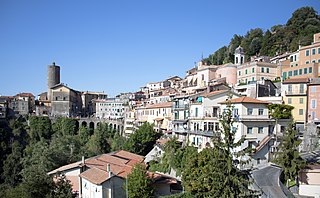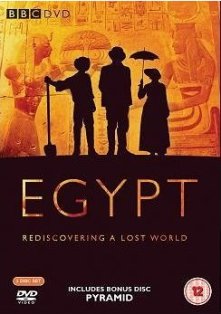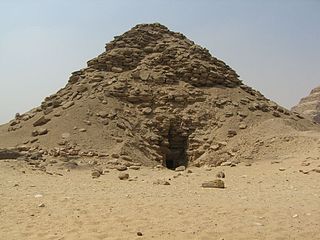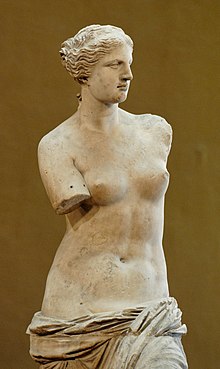
Memphis, or Men-nefer, was the ancient capital of Inebu-hedj, the first nome of Lower Egypt that was known as mḥw ("North"). Its ruins are located in the vicinity of the present-day village of Mit Rahina, in markaz (county) Badrashin, Giza, Egypt.

Tanis or San al-Hagar is the Greek name for ancient Egyptian ḏꜥn.t, an important archaeological site in the northeastern Nile Delta of Egypt, and the location of a city of the same name. It is located on the Tanitic branch of the Nile, which has long since silted up.

The Great Sphinx of Giza is a limestone statue of a reclining sphinx, a mythical creature with the head of a human and the body of a lion. Facing directly from west to east, it stands on the Giza Plateau on the west bank of the Nile in Giza, Egypt. The face of the Sphinx appears to represent the pharaoh Khafre. The original shape of the Sphinx was cut from bedrock, and has since been restored with layers of limestone blocks. It measures 73 m (240 ft) long from paw to tail, 20 m (66 ft) high from the base to the top of the head and 19 m (62 ft) wide at its rear haunches.

Giovanni Battista Belzoni, sometimes known as The Great Belzoni, was a prolific Italian explorer and pioneer archaeologist of Egyptian antiquities. He is known for his removal to England of the seven-tonne bust of Ramesses II, the clearing of sand from the entrance of the great temple at Abu Simbel, the discovery and documentation of the tomb of Seti I, including the sarcophagus of Seti I, and the first to penetrate into the Pyramid of Khafre, the second pyramid of the Giza complex.

The tomb of Seti I, also known by its tomb number, KV17, is the tomb of Pharaoh Seti I of the Nineteenth Dynasty. Located in Egypt's Valley of the Kings, It is also known by the names "Belzoni's tomb", "the Tomb of Apis", and "the Tomb of Psammis, son of Nechois". It is one of the most decorated tombs in the valley, and is one of the largest and deepest tombs in the Valley of the Kings. It was uncovered by Italian archaeologist and explorer Giovanni Battista Belzoni on 16 October 1817.

Naucratis or Naukratis was a city and trading-post in ancient Egypt, located on the Canopic (western-most) branch of the Nile river, south-east of the Mediterranean sea and the city of Alexandria. Naucratis was the first and, for much of its early history, the only permanent Greek settlement in Egypt, serving as a symbiotic nexus for the interchange of Greek and Egyptian art and culture.

Berenice Troglodytica, also called Berenike or Baranis, is an ancient seaport of Egypt on the western shore of the Red Sea. It is situated about 825 km south of Suez, 260 km east of Aswan in Upper Egypt and 140 km south of Marsa Alam. It was founded in 275 BCE by Ptolemy II Philadelphus (285–246 BCE), who named it after his mother, Berenice I of Egypt.

Heracleopolis Magna, Heracleopolis or Herakleoupolis (Ἡρακλεούπολις) is the Roman name of the capital of the 20th nome of ancient Upper Egypt, known in Ancient Egyptian as nn nswt. The site is located approximately 15 km (9.3 mi) west of the modern city of Beni Suef, in the Beni Suef Governorate of Egypt.

The Giza pyramid complex in Egypt is home to the Great Pyramid, the Pyramid of Khafre, and the Pyramid of Menkaure, along with their associated pyramid complexes and the Great Sphinx. All were built during the Fourth Dynasty of the Old Kingdom of ancient Egypt, between c. 2600 – c. 2500 BC. The site also includes several temples, cemeteries, and the remains of a workers' village.
Tomb WV25 is an unfinished and undecorated tomb in the West Valley of the Valley of the Kings, Egypt. It is the beginning of a royal tomb, and is thought to be the start of Akhenaten's Theban tomb. It was discovered by Giovanni Belzoni in 1817; he found eight Third Intermediate Period mummies inside. The tomb was excavated in 1972 by the University of Minnesota's Egyptian Expedition (UMEE) led by Otto Schaden. The project uncovered pieces of the eight mummies, along with artefacts from a late Eighteenth Dynasty royal burial.

Tomb KV19, located in a side branch of Egypt's Valley of the Kings, was intended as the burial place of Prince Ramesses Sethherkhepshef, better known as Pharaoh Ramesses VIII, but was later used for the burial of Prince Mentuherkhepshef instead, the son of Ramesses IX, who predeceased his father. Though incomplete and used "as is," the decoration is considered to be of the highest quality.

Nemi is a town and comune in the Metropolitan City of Rome, in the Alban Hills overlooking Lake Nemi, a volcanic crater lake. It is 6 kilometres (4 mi) northwest of Velletri and about 30 kilometres (19 mi) southeast of Rome.
The year 1818 in archaeology involved some significant events.
The year 1817 in archaeology involved some significant events.

Egypt is a BBC television docudrama serial portraying events in the history of Egyptology from the 18th through early 20th centuries. It originally aired on Sunday nights at 9 pm on BBC1 in 2005. The first two episodes explored the work of Howard Carter and his archaeological quest in Egypt in the early part of the twentieth century. The next two episodes focused on the eccentric explorer "The Great Belzoni" played here by Matthew Kelly. The final two episodes dramatise the discovery and deciphering of the Rosetta Stone by Jean-François Champollion.

The pyramid complex of Userkaf was built c. 2490 BC for the king Userkaf, founder of the 5th Dynasty of Egypt. It is located in the pyramid field at Saqqara, on the north-east of the step pyramid of Djoser. Constructed in dressed stone with a core of rubble, the pyramid is now ruined and resembles a conical hill in the sands of Saqqara. For this reason, it is known locally as El-Haram el-Maharbish, the "Heap of Stone", and was recognized as a royal pyramid by western archaeologists in the 19th century.

Pula is a comune (municipality) in the Metropolitan City of Cagliari in the Italian region of Sardinia, located about 25 kilometres (16 mi) southwest of Cagliari.

The Department of Ancient Egypt is a department forming an historic part of the British Museum, with Its more than 100,000 pieces making it the largest[h] and most comprehensive collection of Egyptian antiquities outside the Egyptian Museum in Cairo.

Ramesses II, commonly known as Ramesses the Great, was an Egyptian pharaoh. He was the third ruler of the Nineteenth Dynasty. Along with Thutmose III of the Eighteenth Dynasty, he is often regarded as the greatest, most celebrated, and most powerful pharaoh of the New Kingdom, which itself was the most powerful period of ancient Egypt. He is also widely considered one of ancient Egypt's most successful warrior pharaohs, conducting no fewer than 15 military campaigns, all resulting in victories, excluding the Battle of Kadesh, generally considered a stalemate.
Khuit II was a wife of King Teti, the first king of the Sixth Dynasty of Egypt.
















